We have been playing and evaluating Mass Effect: Andromeda on PC since it was released. We have retested its performance since the 1.1GB patch was released and also with the very latest AMD and NVIDIA drivers using 19 video cards.
This is a somewhat difficult review for us to write as Mass Effect: Andromeda has received a lot of negative press for a slow start, broken animations, bugs, and weak writing, but we believe that the longer one plays the game, the better it gets. We also found that the patch addressed many of the animation issues and some of the bugs.
Unfortunately, we were not immediately drawn into Mass Effect: Andromeda, but we stuck with it and have completed the main story after about 25 hours of play. Here are our impressions of Mass Effect: Andromeda, including a mini-performance and IQ evaluation.
Mass Effect: Andromeda was developed by Bioware and released on March 21 in North America by Electronic Arts (EA). Mass Effect: Andromeda is a third-person view, action-adventure role-playing video game developed for Microsoft Windows, PlayStation 4 and Xbox One using the Frostbite engine. It is the fourth installment of the popular Mass Effect series.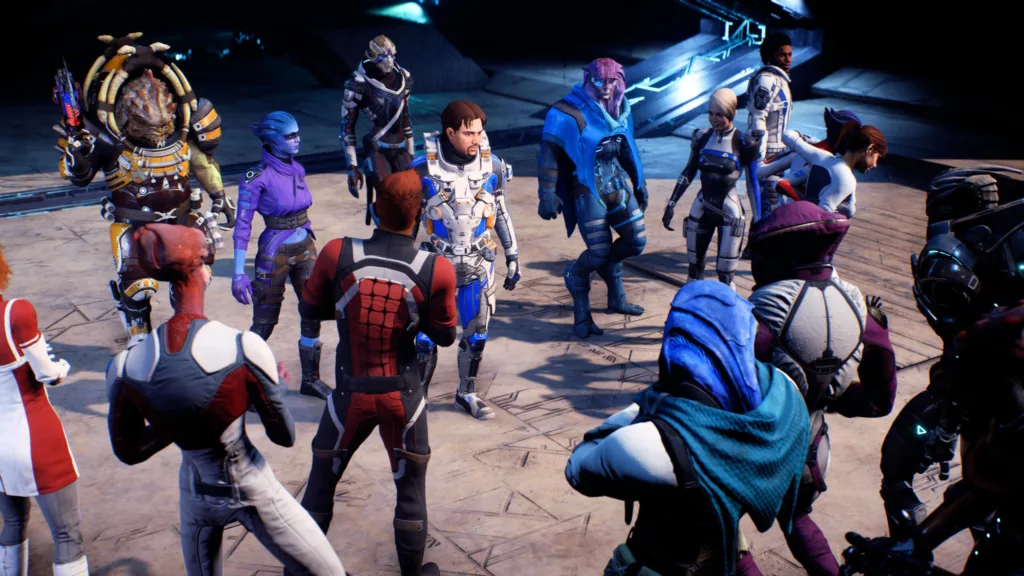
Mass Effect: Andromeda starts inside the Milky Way Galaxy during the 22nd century, where tens of thousands of Initiative pioneers from the 4 main races are heading to Andromeda to populate new home worlds. Each race has sent 20,000 recruits in an “Ark” lead by their own “Pathfinder” who has unique skills by being joined with advanced AI. Once the races arrive in Andromeda, they help build the Nexus which is a huge space station that serves as a center of government and a base of operations for the colonists.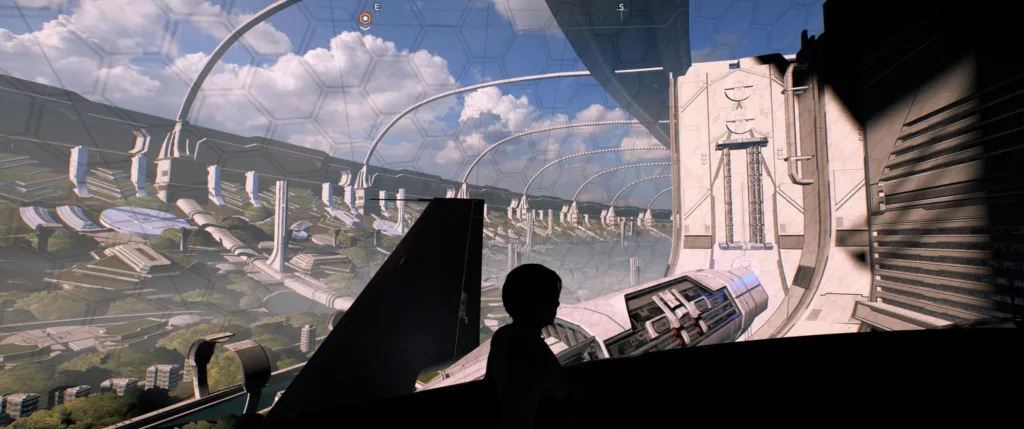
The player will take the role of either twin, Scott or Sara Ryder, inexperienced military recruits who join the Initiative and wake up in Andromeda following a more than 600-year journey in cryostasis. Their father is the human Pathfinder. I picked Scott and customized him the best that I could from the limited choices that the game allowed.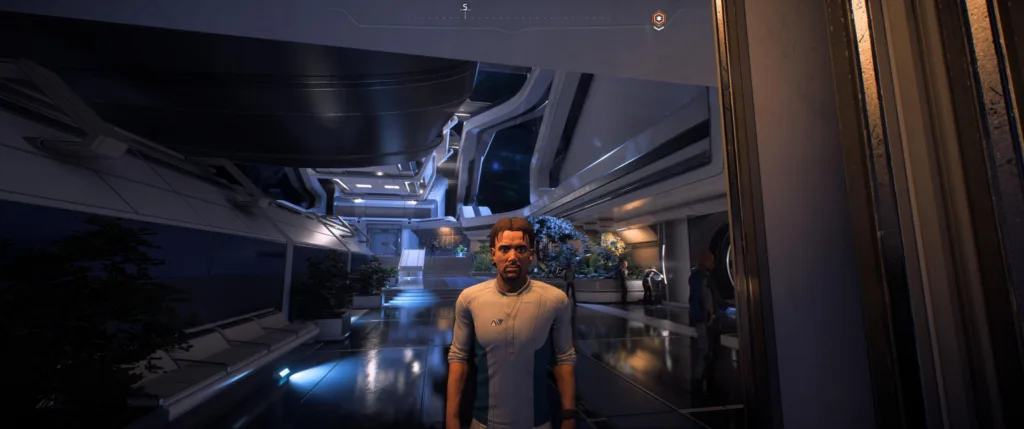 Unfortunately, things do not turn out as the Andromeda Initiative planned. The area of the Andromeda Galaxy that the Initiative planed to populate has been plagued with a dark energy cloud that they name The Scourge which has rendered space flight difficult and has also rendered the planets that they were planning to colonize, uninhabitable. And the Nexus has had to deal with every crisis imaginable including civil war when the Ryder family and the human ark arrive.
Unfortunately, things do not turn out as the Andromeda Initiative planned. The area of the Andromeda Galaxy that the Initiative planed to populate has been plagued with a dark energy cloud that they name The Scourge which has rendered space flight difficult and has also rendered the planets that they were planning to colonize, uninhabitable. And the Nexus has had to deal with every crisis imaginable including civil war when the Ryder family and the human ark arrive.
Before the human ark arrives at the Nexus, the twin you choose is part of an exploration team headed up by their Pathfinder father which heads to one of these Scourge-damaged planets to find that an ancient civilization’s artifacts may help restore the planets to a habitable condition, but now a Andromeda savage race bent on galactic domination is standing in your way. Since I chose Scott, Sarah remains in a coma after an aborted attempt to waken her until she is needed late in the main storyline.
While on this first away mission to the planet’s surface, Scott’s father is killed in action and Scott inherits the role of Pathfinder by being joined with AI, even though he feels completely unprepared for it. And now Scott has to deal with a rival – a potential love interest – who expected that she would be the Pathfinder to succeed Scott’s father.
Unfortunately, up until this point, little of this story is terribly convincing nor is it particularly accurate even from a science fiction point of view. To make it worse, the build-up is painfully slow with the player being forced to run very mundane quests. It isn’t until the human ark joins up with the Nexus that the story begins to make sense and actually gets very interesting about ten hours into the game. If you are able to handle it that long, then the story really starts to get good.
But the story isn’t as much the issue as the characters you have to interact with. They are emotionless and rather dull, and the conversations are superficial except for flashes of occasionally brilliant writing.

Even the romance options (except for one) don’t really have too much of a payoff, and you can choose an exclusive same sex or opposite sex companion, or you can just flirt.
Probably worst of all, the original animations were … well, creepy. The body and especially the eye movements were very strange and distracting, but they have been greatly improved by the patch.
 Once you are deep into the game, you get to planet-hop and there are a lot of planets to explore. Each world is beautiful and quite different from the other worlds. You can ignore the side quests and just concentrate on the main story, but your game will probably not top 25 hours. And after you complete it, you can restart the game and pick the other twin as Pathfinder if you wish.
Once you are deep into the game, you get to planet-hop and there are a lot of planets to explore. Each world is beautiful and quite different from the other worlds. You can ignore the side quests and just concentrate on the main story, but your game will probably not top 25 hours. And after you complete it, you can restart the game and pick the other twin as Pathfinder if you wish.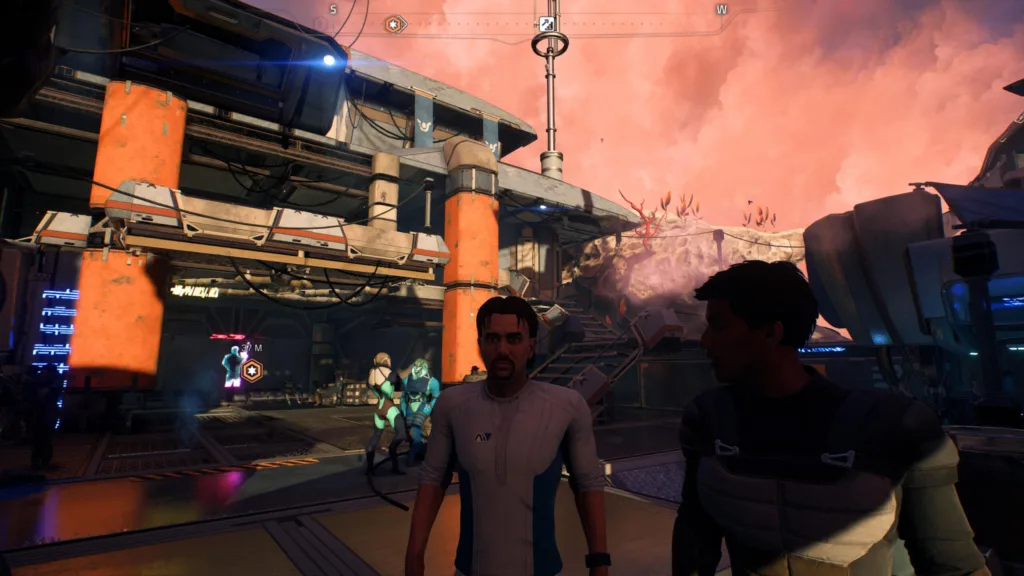
There is also a problem with choice in Mass Effect: Andromeda. You cannot play as a “bad” Pathfinder. Even if you pick a sarcastic response, it really doesn’t make much difference to the way the game proceeds nor how your fellow explorers view you. There are probably only one or two major decisions that really has a major impact on how the game ends.
That said, the second half of the main story makes up for the painfully slow first half as you start to see what you are doing actually impacts the humans and allies that are depending on you. Scott really grows into his role as Pathfinder and earns the support of his team. There is a real sense of progression as the Pathfinder gains experience and levels-up. You also get to use an all-terrain vehicle when you are on a planet’s surface which gives some nice variety to exploration, and fast-travel is an option using forward stations.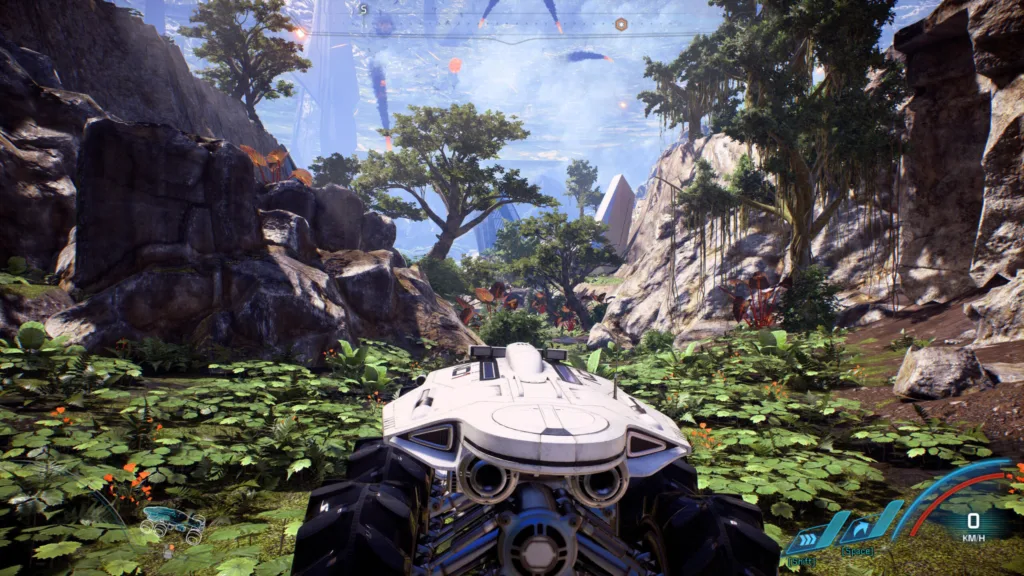 The game finally gets going when you discover that the hostile Andromeda race you are in conflict with has a terrible purpose, and you have to race them to discover a way to end their threat as well as learn to use ancient technology to repair the planets you wish to colonize or the Andromeda Initiative will fail – and much worse will befall the thousands of Milky Way immigrants still in their arks.
The game finally gets going when you discover that the hostile Andromeda race you are in conflict with has a terrible purpose, and you have to race them to discover a way to end their threat as well as learn to use ancient technology to repair the planets you wish to colonize or the Andromeda Initiative will fail – and much worse will befall the thousands of Milky Way immigrants still in their arks.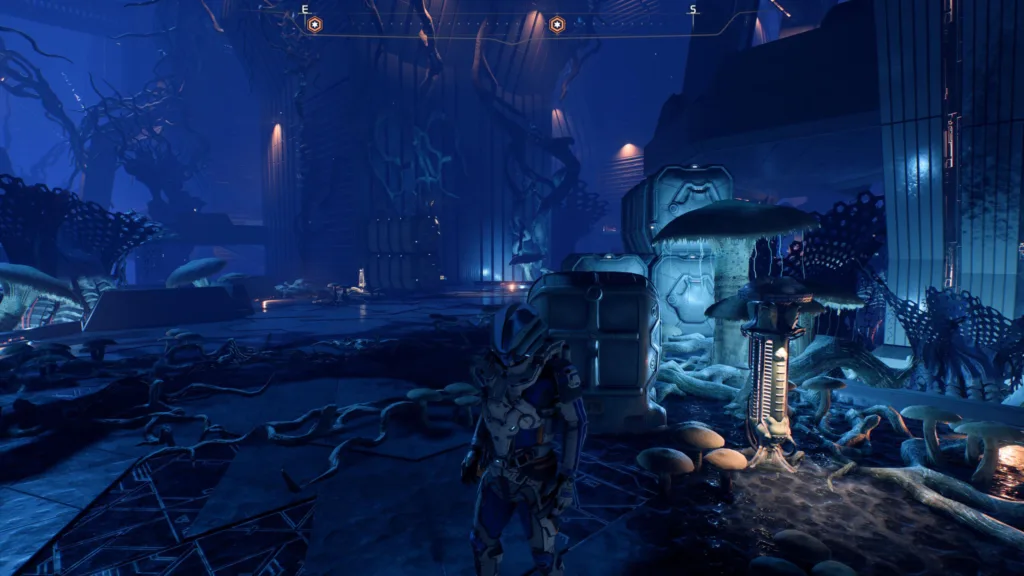
If you are willing to go outside the main storyline, you will find out that your section of the Andromeda Galaxy is huge and it offers a lot of variety to the player. 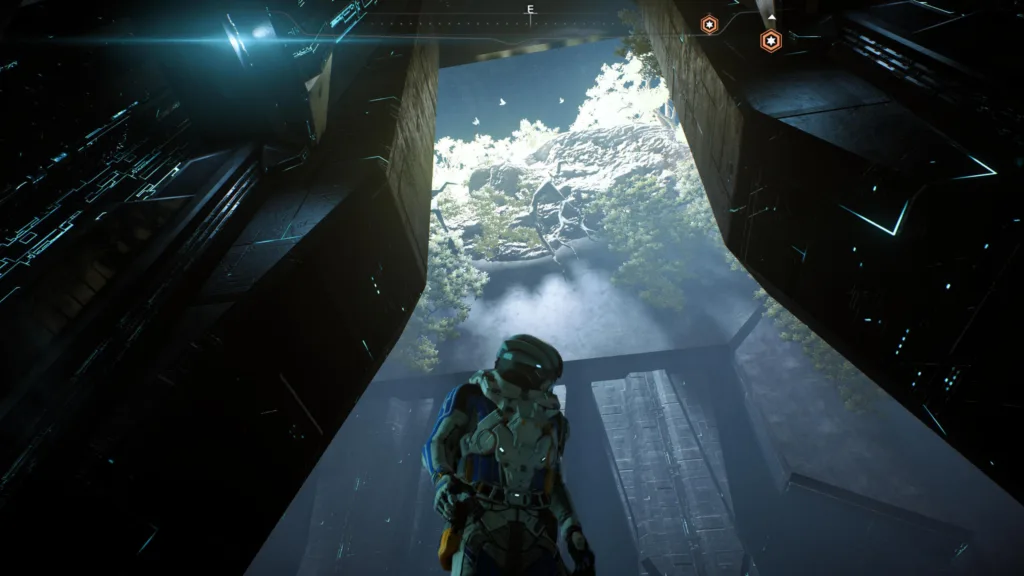
In another plus for the game, combat is varied and you are not locked into one character class. My Scott was a weapons specialist but he also had biotic powers which made him very effective against all enemies including the bosses. And my two chosen AI companions also leveled up exactly as I wanted to support the Pathfinder very well on away missions, never getting in the way and always finding them quite useful in combat.
Finding rare items to craft might be a game weakness, but is totally unnecessary on the lower difficulty settings. My Pathfinder was able to find good armor and weapons, and he never felt under-powered.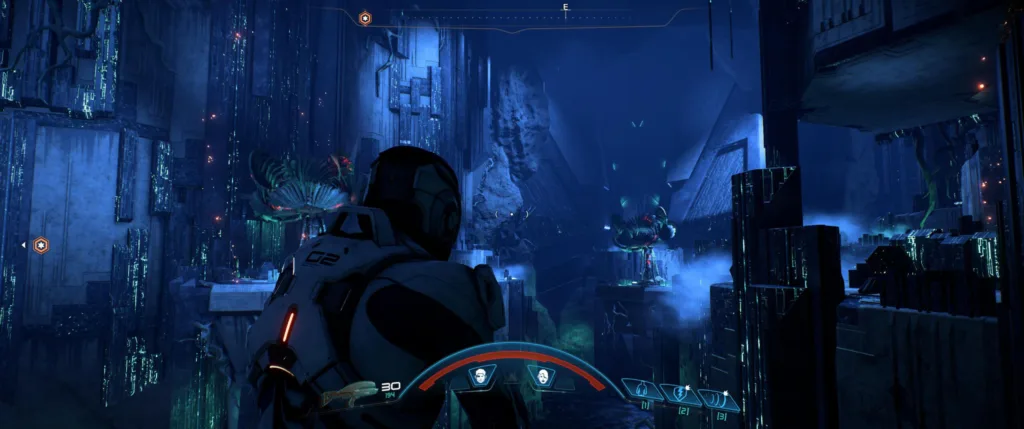
You will never run out of things to do if you are a completionist. The game offers dozens of planets for you to visit and to raise their “Viability” level by establishing outposts, and it would be easy to sink well over 100 hours into the game on the first playthrough. We will definitely give a recommendation to this flawed gem of a game and now we want to see how it performs on 19 video cards after the patch and with the very latest AMD and NVIDIA drivers. We are also going to look at a NVIDIA GameWorks exclusive, Ansel.
Here are the video cards that we tested at the default ultra settings at 1920×1080, 2560×1440, and at 3840×2160 resolutions with the very latest drivers:
- GTX 1080 Ti 11GB
- TITAN XP (2016) 12GB
- GTX 1080 8GB
- GTX 1070 8GB
- GTX 1060 6GB
- GTX 1060 3GB
- GTX 1050 Ti 4GB
- GTX 980 Ti 6GB
- GTX 980 4GB
- GTX 970 4GB
- GTX 780 Ti 3GB
- GTX 770 – 2GB
- Fury X 4GB
- RX 480 8GB
- RX 470 4GB
- RX 460 4GB
- R9 290X 4GB
- RX 280X 3GB
- RX 270 3GB
NVIDIA’s GameWorks is featured in Mass Effect: Andromeda. NVIDIA’s HBAO+ is a high level of Ambient Occlusion that adds to the atmosphere by creating better shadows and lighting. “Full HBAO” is an option beyond default Ultra’s “HBAO” that takes a pretty solid performance hit when enabled. And Ansel is a flexible screenshot capture program using a floating camera that is exclusive to NVIDIA cards that even can handle 360 degree captures.
The Mass Effect: Andromeda settings are visually beautiful and quite varied, from desert planet settings, to jungles, and from mysterious ancient technology to several kinds of space ships. There are dark nighttime scenes to brightly lit daytime scenes, and the game makes good use of the Frostbite engine capabilities.
You have to experience Mass Effect: Andromeda for yourself as a player to appreciate it much as you do a movie or a play, and absolutely not from viewing clips on a tablet, nor from watching Youtube gameplay videos.
Mass Effect: Andromeda is part of a series, and it manages to capture the spirit of the earlier games and it expands on them by heading in a different more “light” direction so that the player doesn’t feel he is letting his allies down as he chases side quests. The controls are easy to manage in this game and the combat is satisfying.
Although the main story has a satisfying ending that answers a lot of questions and provides a coherent backstory, it leaves other questions unanswered for future downloadable content, and perhaps for Mass Effect: Andromeda to continue the story in future installments.
Gameplay
The Mass Effect: Andromeda gameplay is good. The computer controlled AI enemy NPCs are adjusted by the game difficulty levels, and at the higher levels, they are quite challenging.
Saves and difficulty
This gamer hates the checkpoint system which is generally not an issue in Mass Effect: Andromeda. There are unlimited saves except on missions when you must depend on the checkpoints. And for the entire last mission of the main story, no manual saves are allowed.
Replayability
Mass Effect: Andromeda has some definite replayability. Mostly a player will want to explore and find everything the first playthrough which may require 100 or more hours. You can start over as your twin at a higher difficulty, but little changes unless you want to try making a couple of crucial decisions differently.
Bugs, Graphics and Performance
After the patch, there now appear to be very few bugs that affect the game performance, and even during more than 20 hours of play pre-patch we only experienced two lock-ups which required us to restart the game.
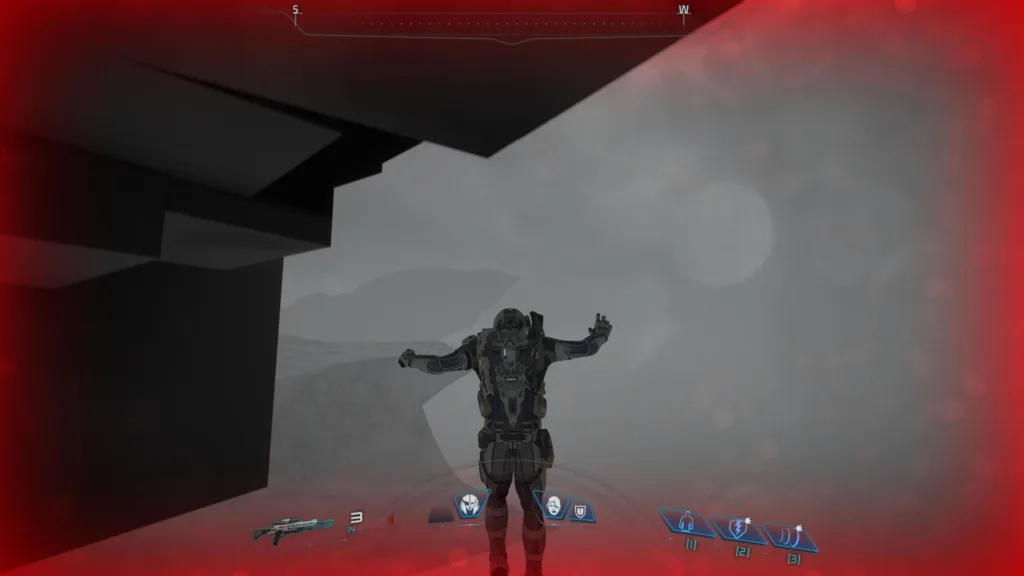
The implementation of DX11 in Mass Effect: Andromeda is good, and it appears to be reasonably well optimized. Although the Frostbite engine supports DX12, the devs choose not to use it.
Performance
We played Mass Effect: Andromeda at the default ultra settings although we tried the very highest details settings. We mostly played at 3440×1440 or at 3840×2160 at default Ultra settings using a GTX 1080 Ti with excellent performance results, and then replayed much of it with 18 other video cards using our Core i7-6700K at 4.0GHz where all 4 cores turbo to 4.6GHz, an ASRock Z7170 motherboard and 16GB of Kingston HyperX DDR4 at 3333MHz. The repeatable Fraps benchmark that we created on Promise was about 15% more demanding than the game’s average framerate, but about 10% less demanding than the toughest boss fights which slowed framerates the most.
On the next page, we will introduce static image quality screenshots to compare some the main settings, and later we will give performance results using the default Ultra settings.
Mass Effect: Andromeda also supports NVIDIA’s Ansel which we are checking out here for the first time. Think of Ansel as a camera that is integrated into your gaming experience that allows you to capture gameplay that was previously impossible. With Ansel, players can move the camera to any angle they desire, apply filters, use super resolution capture and even capture in 360 for viewing in VR.
Let’s check out the Settings that we used as well as their impact on Image Quality (IQ).
Recommended Settings
A GTX 1060/6GB or RX 480 are recommended for 1920×1080, while a GTX 1080 can mostly handle 4K at some reduced settings, but the game is very scalable for lesser GPUs on lower settings.
Processor: Intel Core i7-4790 or AMD FX-8350
Memory: 16 GB RAM
Graphics: NVIDIA GTX 1060 3GB, AMD RX 480 4GB or better
Let’s look at settings and image quality (IQ). There are several major settings that can affect game performance. Here are our some of our options and the highest settings that we used at 3840×2160.
Image Quality & Settings
Mass Effect: Andromeda has overall Low, Medium, High, and Ultra settings. Ultra settings allow you to choose your resolution and there is further customization possible – either to lower settings or to increase 3 settings beyond default Ultra where Lighting and Effects are on High, but may be increased to Ultra, and “Full HBAO” is possible at a significant performance hit.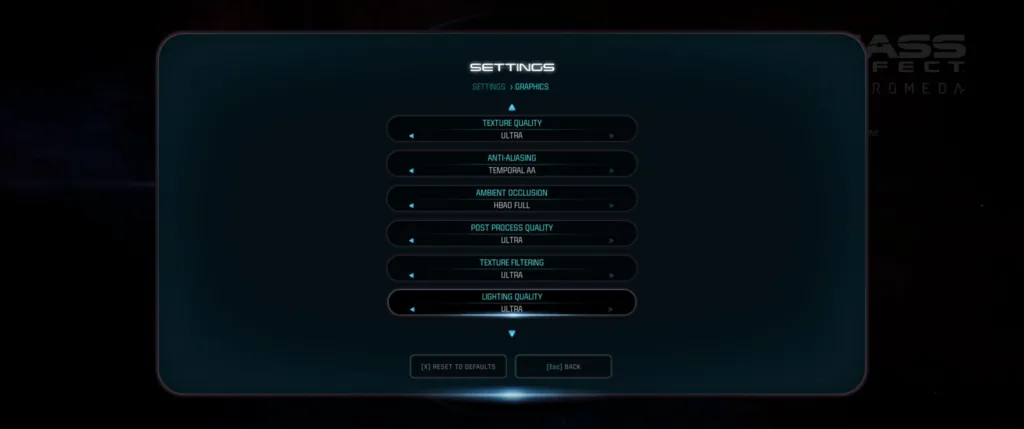
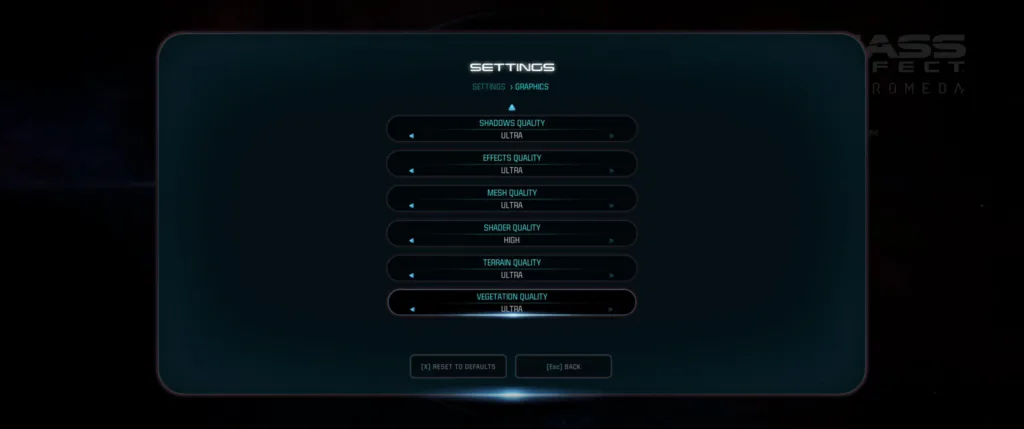
Unfortunately, default High settings lock the resolution to 1080P while Medium settings are locked to 900P, and Low is stuck at 720P. It is very easy to see the difference between the settings because of the way the resolution is tied to the setting.
Now let’s look at a series of screenshots taken from the same two places beginning with the highest settings and progressing through the defauilt setting options. All screenshots were taken at 3840×2160 – first outdoors, then indoors. Make sure to open these images full sized into a separate window or tab for a much easier IQ comparison.
Highest Settings – Ultra Plus (including HBAO Full/Lighting & Effects, Ultra)
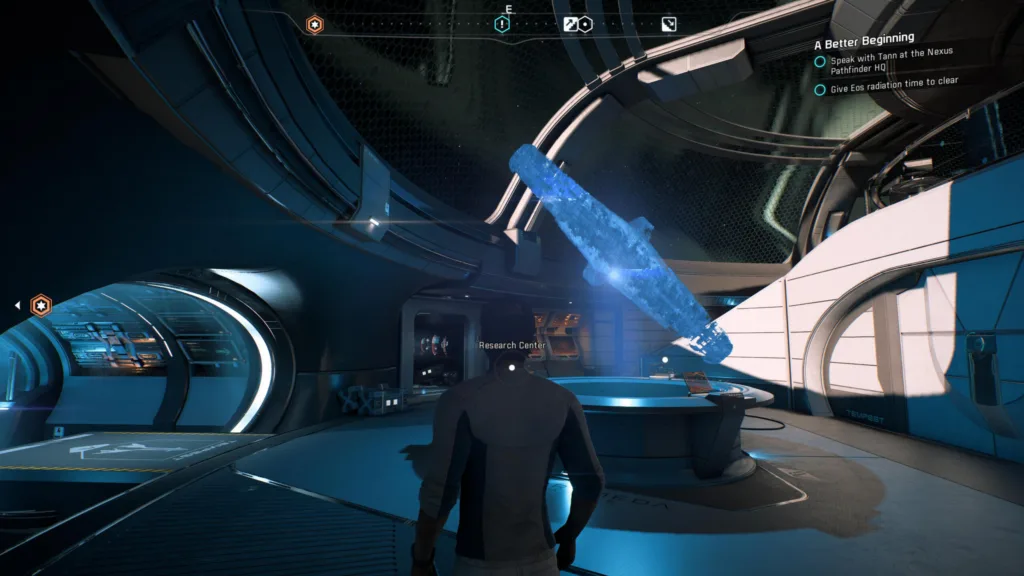
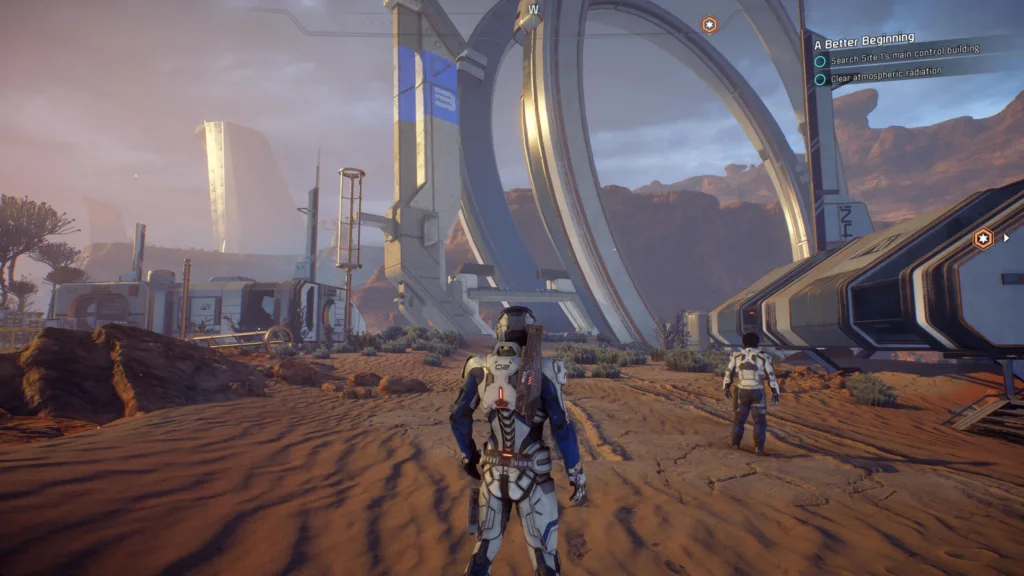 Performance with a GTX 1080 Ti at maxed out Ultra Plus settings is 44 FPS average. The above images are with the settings at the highest possible. Next, we drop to the default Ultra setting which we used to play most of our game.
Performance with a GTX 1080 Ti at maxed out Ultra Plus settings is 44 FPS average. The above images are with the settings at the highest possible. Next, we drop to the default Ultra setting which we used to play most of our game.
Default Ultra
Default Ultra uses regular HBAO (as opposed to “Full HBAO”, and the Lighting and Effects settings drop from Ultra to High). As with all the following comparison images, all images are at 3840×2160.
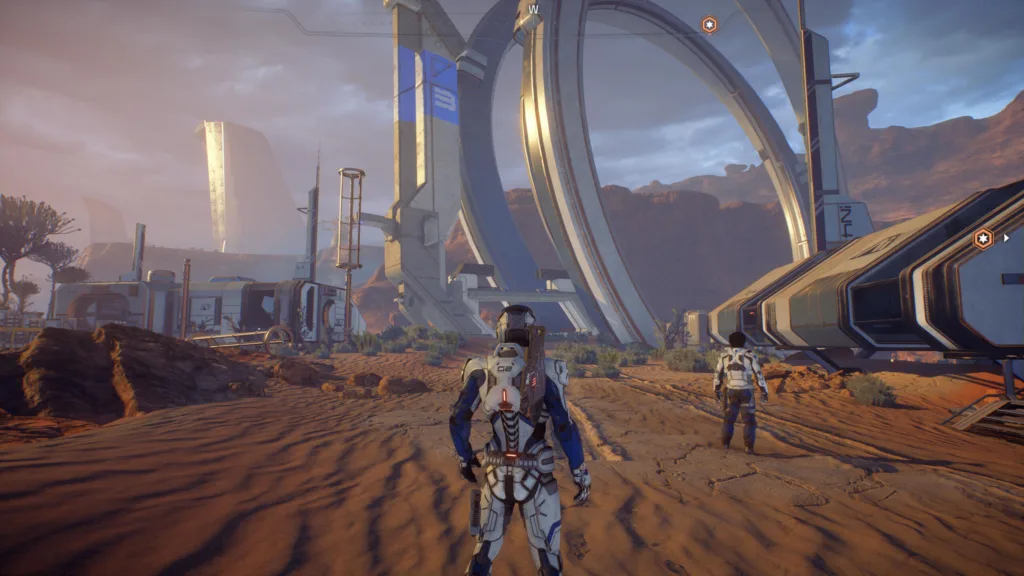
As you can see, there isn’t a lot of IQ difference between the default Ultra setting and Ultra Plus maxed-out settings. However, the performance hit with the extra settings maxed out is pretty severe. Our GTX 1080 Ti at 3840×2160 using default Ultra ultra settings could manage 52.9 FPS average/47 FPS minimum while using the completely maxed out settings dropped to 44 FPS average/39 FPS minimum!
High settings – Auto 1080P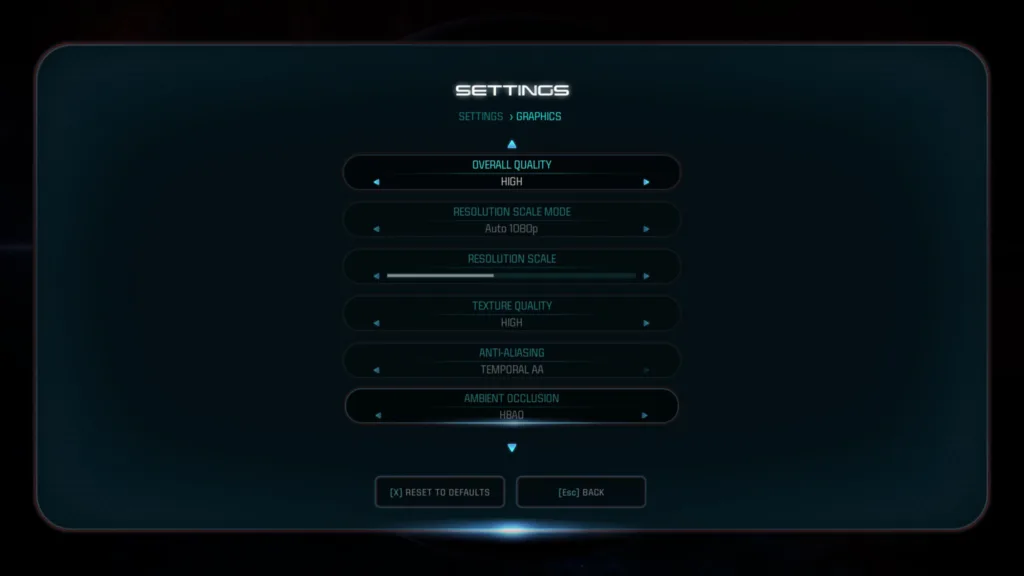
Dropping to High settings at 3840×2160 or any other resolution above 1920×1080 is an awful idea as the game forces the resolution to 1080P. However, you still get decent IQ at 1920×1080, and anti-aliasing shares using Temporal AA with Ultra settings which really helps with shimmering and crawling with the camera in motion.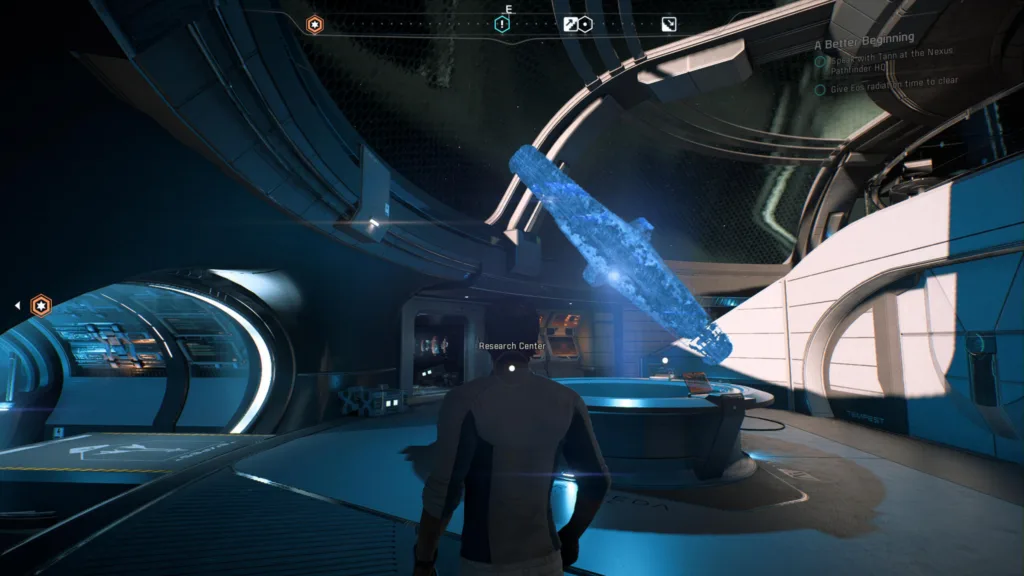
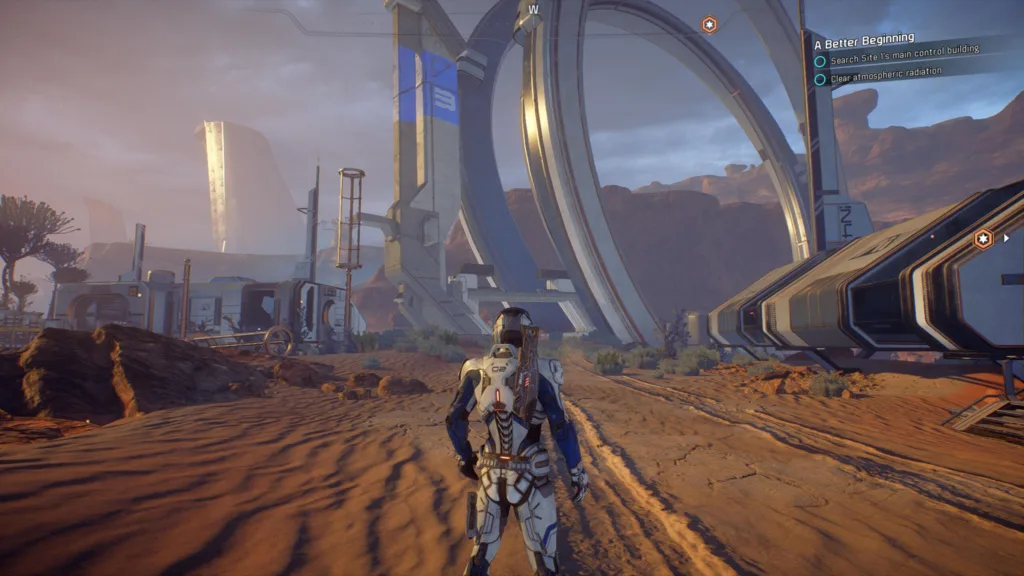 High Settings are OK – but only if you are playing at 1920×1080. Performance with a GTX 1080 Ti at default High settings is 123 FPS average.
High Settings are OK – but only if you are playing at 1920×1080. Performance with a GTX 1080 Ti at default High settings is 123 FPS average.
Medium Settings (720P auto)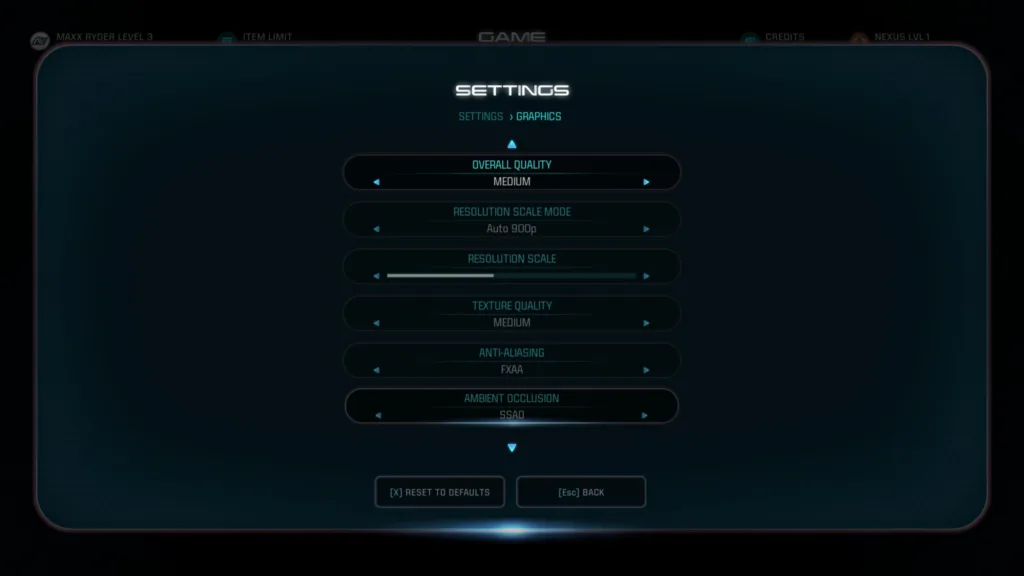
Medium settings force the resolution to 900P which look poor at any other resolution than 1600×900. Anti-aliasing is affected as it is dropped to FXAA instead of temporal AA and the crawling and shimmering is much more apparent now.
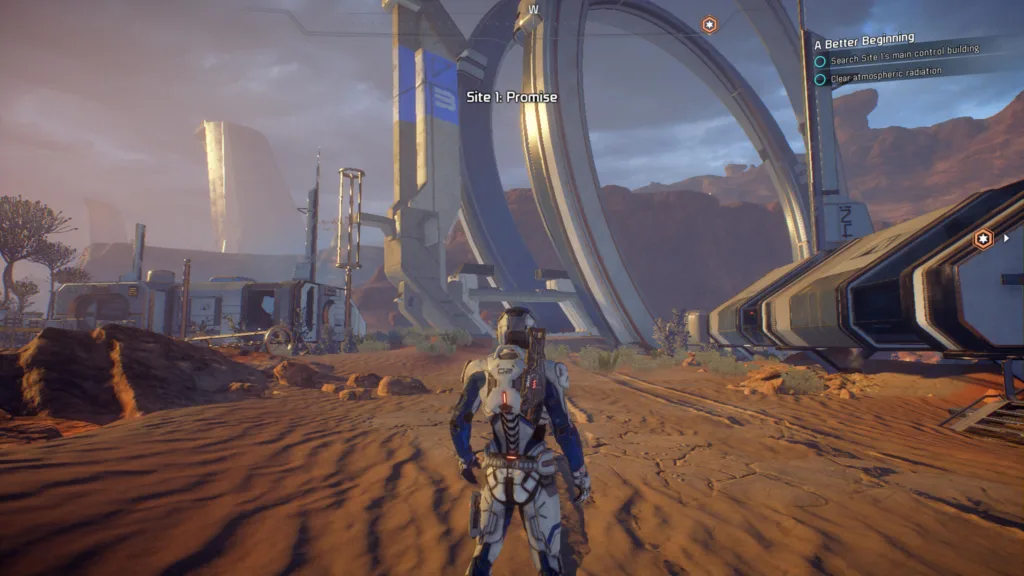
Performance with a GTX 1080 Ti at default Medium is 177 FPS average. Finally we look at low settings.
Low Settings 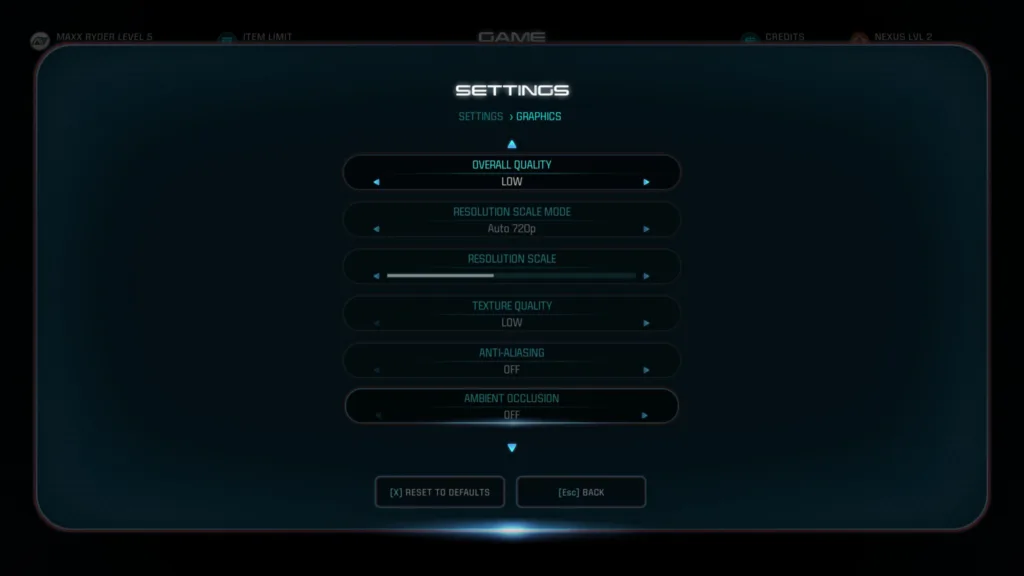
Using low setting forces the game to 720P which looks extremely poor at any resolution other than 1280×720. Worst of all there is no anti-aliasing at all! Here are the screenshots: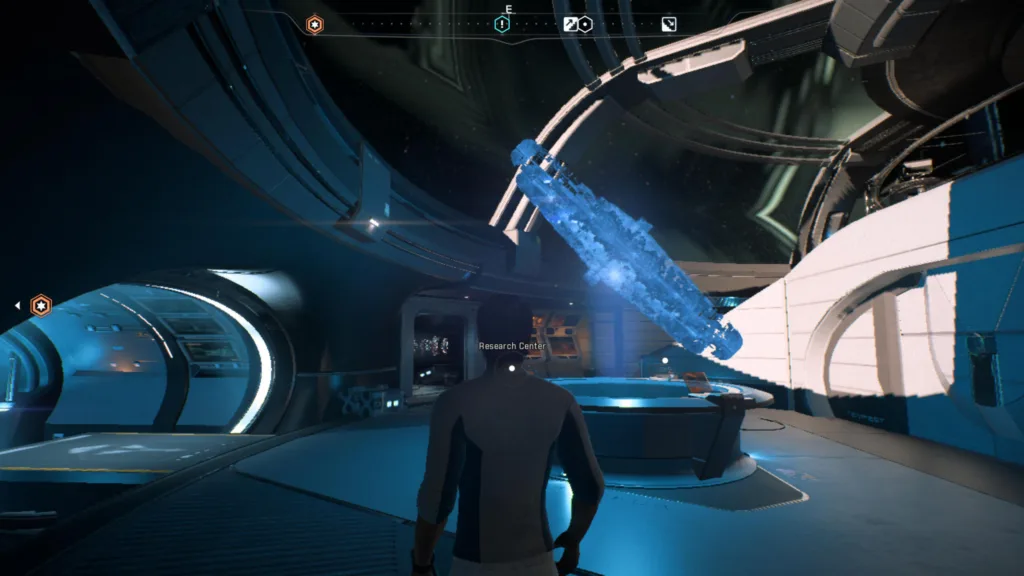
 The detail is awful and the lighting is washed out. Of course, it would be less blurry at the native 1280×720, but performance with a GTX 1080 Ti at maxed out settings is 197 FPS average.
The detail is awful and the lighting is washed out. Of course, it would be less blurry at the native 1280×720, but performance with a GTX 1080 Ti at maxed out settings is 197 FPS average.
Ansel – NVIDIA only
Ansel is a flexible screenshot capture program using a floating camera that is exclusive to NVIDIA cards. With Ansel, players can move the camera to any angle they desire, apply filters, use super resolution capture and even capture in 360 for viewing in VR.
Regular screenshots taken in games are limited to the in-game view of the static camera. Ansel frees the camera so it can be moved around the in-world environment. This includes elevating the camera up in the air, or panning around a third-person game to snap the camera in front of a character.
Here’s an example where you are locked to screenshots from the in-game view.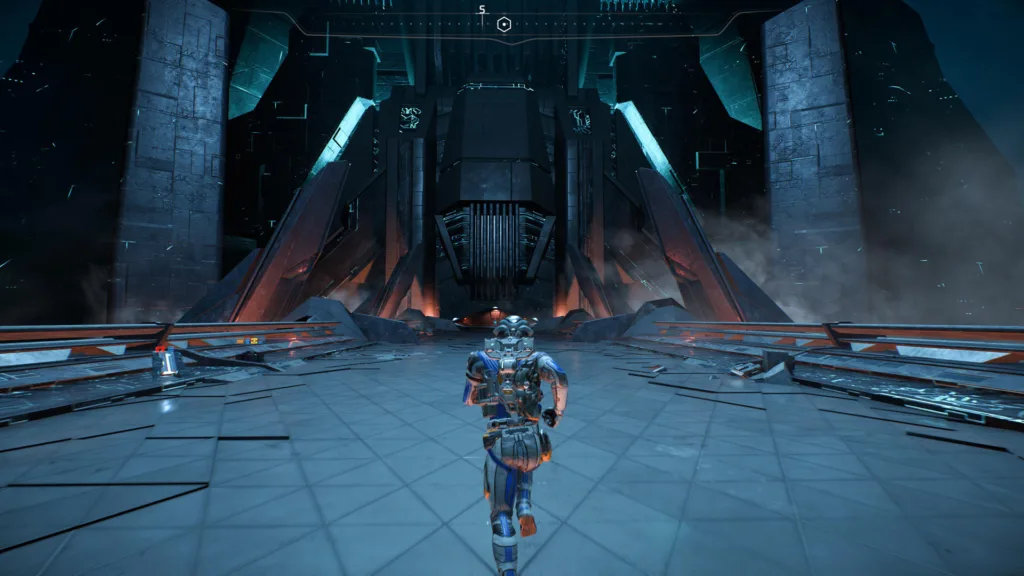
Now let’s unlock our camera with Ansel.
Let’s take another example where you are battling a large boss. There is no perspective available in game except this one from the player’s perspective – looking up.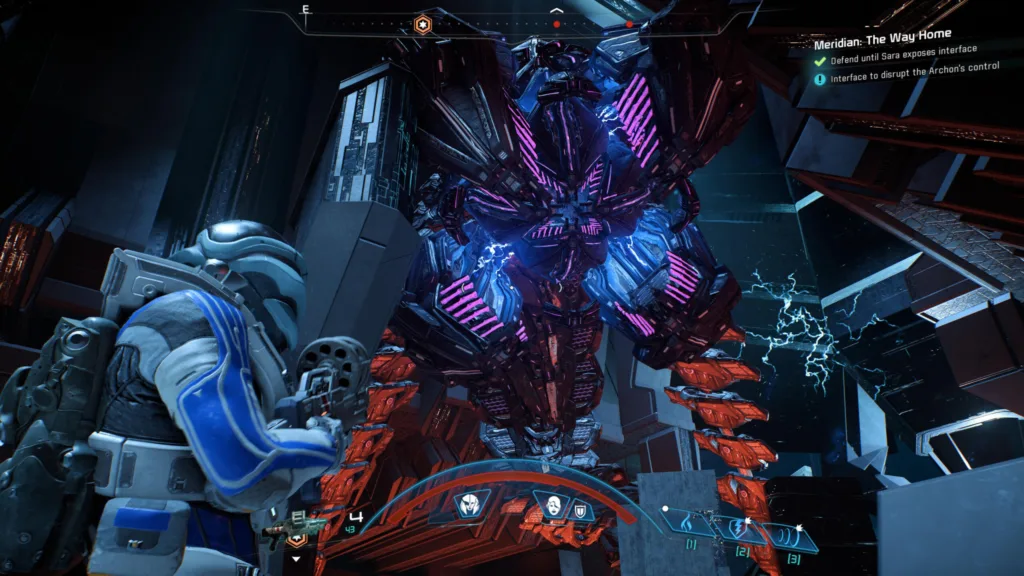
Now let’s free our camera with Ansel.
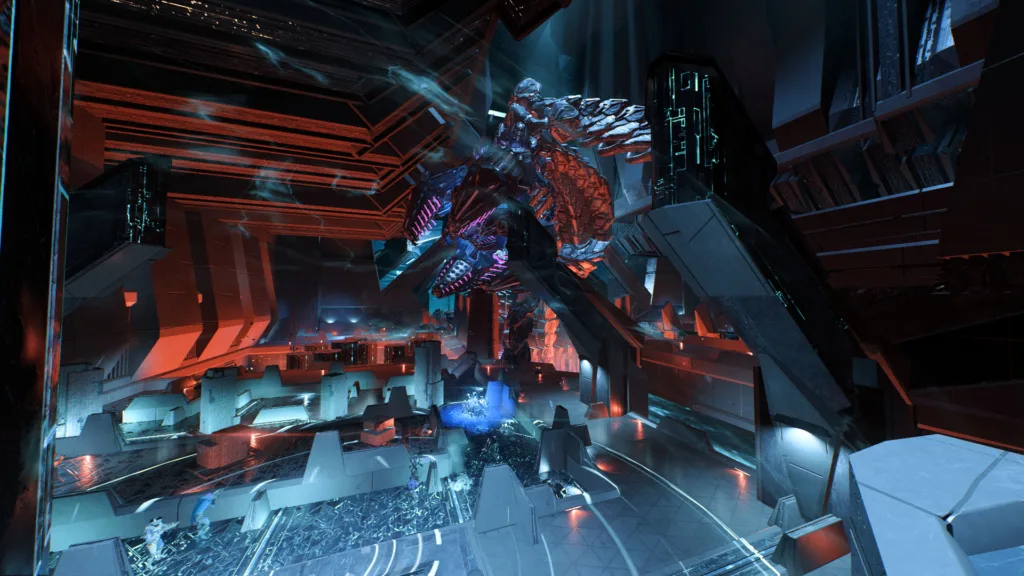 Ansel 360 Capture
Ansel 360 Capture
With this feature you can now capture your entire game environment in 360 degrees, mono or stereo, and then share it using your mobile phone, VR headset, or PC.
Here is a regular in-game screenshot.
Here is the same location using Ansel but captured in a 360 degree view.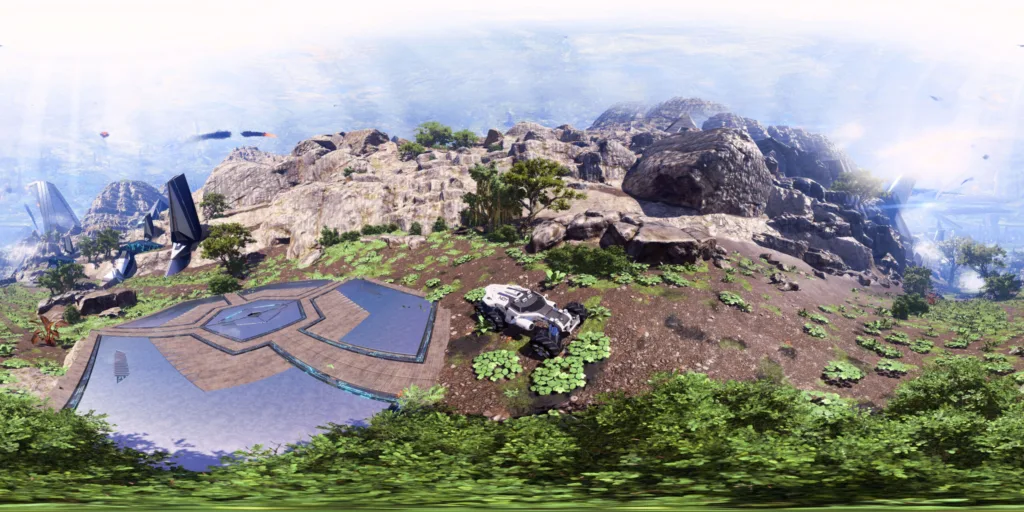
Ansel is able to do far more that what we have shown. When you take a an Ansel capture, your game pauses, you can move the camera anywhere the dev allows, plus you can apply post-process filters or shades to your Ansel capture before you save it. And Ansel even allows for Super Resolution shots so that you are no longer limited by your game’s resolution. In fact, you can capture up to 33 times your game’s resolution at 1080P allowing you to capture images with perfect edges and with extremely high detail.
Let’s look at our Test configuration on the next page.
Test Configuration – Hardware
- Intel Core i7-6700K (reference 4.0GHz, HyperThreading and Turbo boost is on to 4.6GHz; DX11 CPU graphics).
- ASRock Z7170M OC Formula motherboard (Intel Z7170 chipset, latest BIOS, PCIe 3.0/3.1 specification, CrossFire/SLI 8x+8x)
- HyperX 16GB DDR4 (2x8GB, dual channel at 3333MHz)
- GTX 1080 Ti 11GB
- TITAN XP (2016) 12GB
- GTX 1080 8GB
- GTX 1070 8GB
- GTX 1060 6GB
- GTX 1060 3GB
- GTX 1050 Ti 4GB
- GTX 980 Ti 4GB
- GTX 980 4GB
- GTX 970 4GB
- GTX 780 Ti 3GB
- GTX 770 – 2GB
- Fury X 4GB
- RX 480 8GB
- RX 470 4GB
- RX 460 4GB
- R9 290X 4GB
- RX 280X 3GB
- RX 270 3GB
- Two 2TB Seagate FireCuda 7200 rpm SSHDs for each platform
- EVGA 1000G 1000W power supply unit
- EVGA CLC 280 CPU liquid cooler, supplied by EVGA
- Onboard Realtek Audio
- Genius SP-D150 speakers, supplied by Genius
- Thermaltake Overseer RX-I full tower case, supplied by Thermaltake
- ASUS 12X Blu-ray writer
- Monoprice Crystal Pro 4K
Test Configuration – Software
- GeForce WHQL 381.65 was used for all NVIDIA cards. High Quality, prefer maximum performance, single display. See control panel images below.
- AMD Crimson Software 17.4.1 hotfix drivers were used for all AMD cards. See control panel image below.
- VSync is off in the control panel. G-SYNC is off.
- Specific settings enabled as noted on the chart.
- All results show average frame rates including minimum frame rates shown in italics on the chart next to the averages in smaller font.
- Highest quality sound (stereo) used in all games.
- Windows 10 64-bit Home edition, Mass Effect: Andromeda was run under the DX11 render paths. Latest DirectX
- Mass Effect: Andromeda has been patched to its latest version at time of publication which includes a 1.1GB patch.
- MSI’s Afterburner used to set all Power Limit/Draw and temperatures to maximum and clocks to reference speeds.
The Game
- Mass Effect: Andromeda, digital EA retail copy.
AMD Crimson Control Center Settings
We used the latest ReLive 17.4.1 drivers with these settings and used MSI’s Afterburner to lock the boost clocks to reference as well as set the power limit and temperature sliders to their maximums.
NVIDIA Control Panel settings
We use NVIDIA’s latest drivers plus used MSI’s Afterburner to set all the clocks locked to the reference speeds and also set the Power and temp limits to their maximums.
Let’s check the performance of our nineteen tested video cards on the next page and then head for our conclusion.
Performance & Conclusion
NVIDIA has their own optimization suggestions which may be quite helpful, or a player can just use the GeForce Experience included with the latest recommended 381.65 GeForce drivers. The GeForce Experience will, at the touch of a button, set near-ideal custom settings for any GeForce powered PC and for more than 100 other games.
For the best AMD experience, use the latest drivers – Crimson Software ReLive 17.4.1 or 17.4.2 hotfix which are both optimized for Mass Effect: Andromeda.
Performance
We found absolutely no performance difference pre- and post-patch. Also, the latest drivers from AMD and NVIDIA likewise have made no improvement since their optimized drivers for Mass Effect: Andromeda launched 3 weeks ago just before the game did.
There is no built-in benchmark but we found and created one from a minute-long Fraps run on Promise that is 100% repeatable and reasonably representative of Mass Effect: Andromeda gameplay’s most demanding outdoor scenes. However, it falls about ten percent short of the most demanding indoor scenes in extreme boss battles.
Here are our performance results using 19 video cards at 3 resolutions using the default Ultra settings. Average framerates are given in bold and the minimums are shown in italics in slightly smaller font next to the averages. Please open this chart in another window or tab for better viewing.
A GTX 1080 Ti can max out Mass Effect: Andromeda at the default Ultra settings at 3840×1080 if you don’t mind framerate dips into the upper 40s. A GTX 1080 at the same settings and resolution can generally stay in the upper to mid-30 FPS range, while a GTX 1060 needs to be at 1920×1080 to stay in the upper 50s FPS for averages. A Fury X appears to be limited by its 4GB of vRAM as it has lower minimums than an 8GB RX 480.
Mass Effect: Andromeda is a fairly demanding and a good-looking game that scales very well. Let’s head for our conclusion.
Conclusion
Mass Effect: Andromeda is a really fun game once it gets going. If you are a completionist, you will likely put over 100 hours into the game. If you just stick to the main storyline, you may play for 20-25 hours. 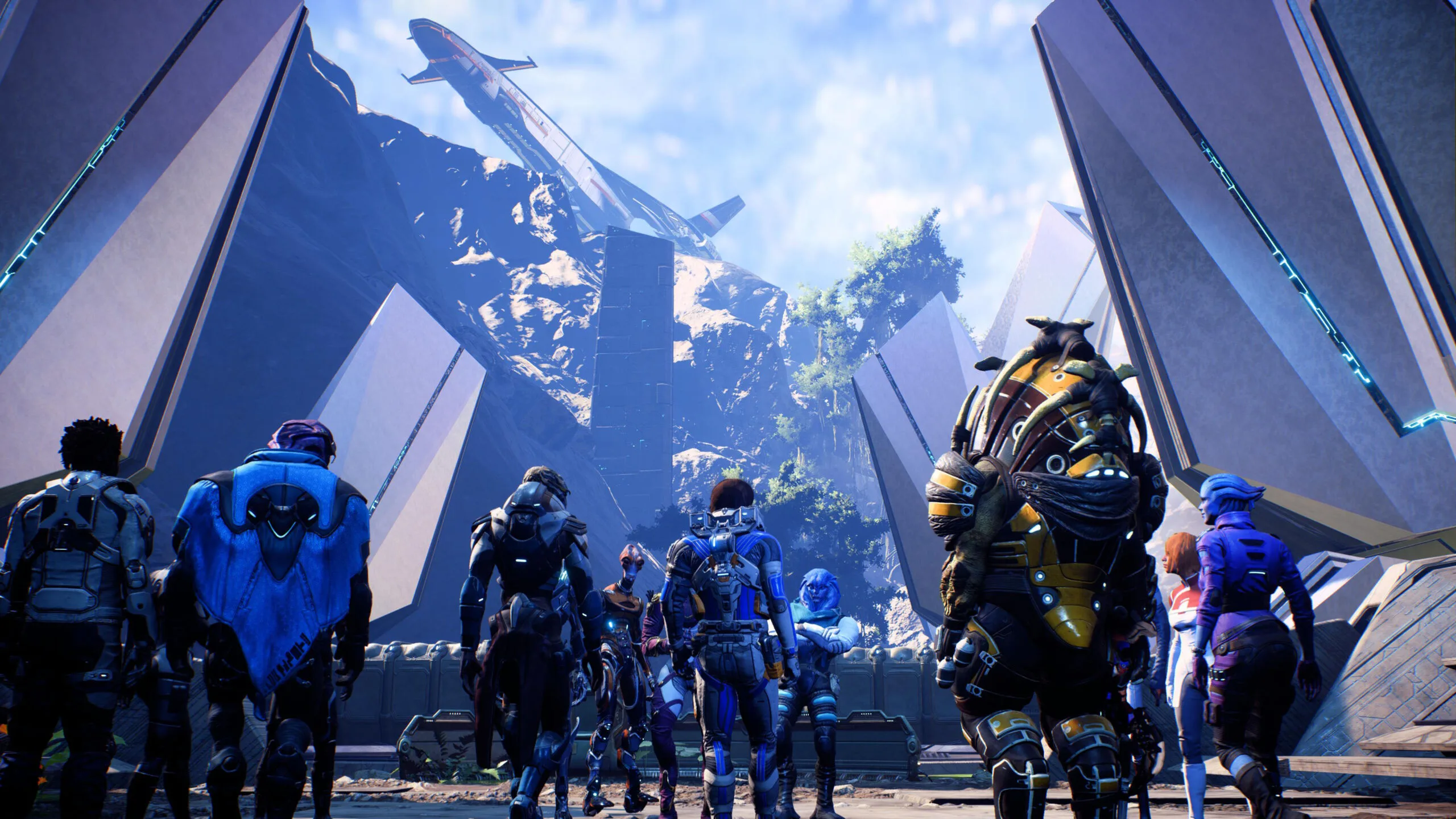
If we have to give it a score, Mass Effect: Andromeda deserves an “6.9” in our opinion as flawed gem of a game.
Mass Effect: Andromeda comes recommended post-patch and it is a certain hit for Mass Effect series fans as it doesn’t stray too far from the core mechanics and gameplay that has made this series so popular. The graphics are very good, the gameplay is excellent, and the story is sufficient to move the action along and it gets better and better as you progress. We feel it is worth the current asking price for a decent length and overall high-quality single player adventure. We expect that future patches will address some of its remaining flaws. And best of all, it has opened up the Andromeda Galaxy to future Mass Effect adventures.
Mass Effect: Andromeda has become BTR’s latest benchmark. Stay tuned as we have many more reviews and evaluations coming up. This week, you can expect a full review of the “SmartDesk” which may be the best standing/sitting desk in the world. And we will have a new review with brand new hardware next week. Stay tuned to BTR.
Happy Gaming!



Comments are closed.